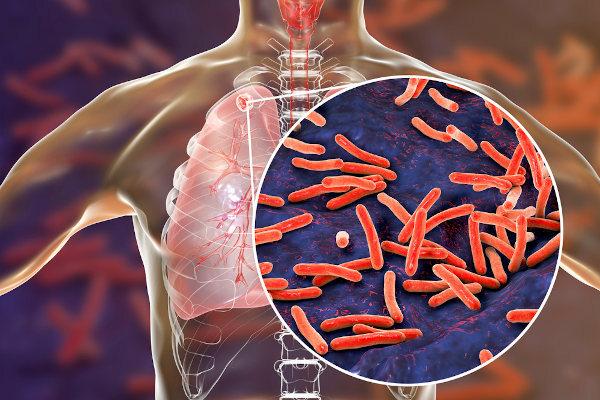THE tuberclesand it is an infectious disease triggered by a bacterium known as Koch's bacillus. Airborne, this health problem mainly affects the lungs, causing symptoms such as cough (which can stay for three weeks or more), fever and fatigue.
Even with cure and prevention, many people still die as a result of the disease. According to the Ministry of Health, annually, tuberculosis affects about 10 million people and causes the death of about one million people worldwide.
Read too: 10 leading causes of death in the world
What is tuberculosis?
Tuberculosis is a disease caused by Mycobacterium tuberculosis or Koch's bacillus, which can affect various organs in our body. Although it also affects other parts (extrapulmonary form), this infectious disease usually affects the lungs (pulmonary form). Extrapulmonary forms usually involve bones, intestines, eyes, skin and nervous system, for example, and are more common in people with HIV, who have their immune system. committed.

What are the symptoms of tuberculosis?
Tuberculosis mainly affects the lungs, triggering symptoms such as cough, which can be without or with phlegm, night sweats, evening fever, fatigue, weight loss and chest pain. When it affects other regions of the body, other symptoms may appear depending on the organ affected.
How is tuberculosis transmitted?
Tuberculosis transmission happens when a healthy person inhales droplets with the bacillus of Koch from a sick person who, by coughing, sneezing or even talking, eliminates the bacilli. It is noteworthy that not all people who are exposed to the bacteria that cause tuberculosis become infected. Factors such as where exposure occurred and length of exposure can affect disease transmission.

Infection with bacilli happens when they pass through the upper respiratory tract and reach the pulmonary alveoli, small bag-shaped structures where gas exchange takes place. These bacilli then multiply and a part spreads through the body via the bloodstream. The immune system thus tries to control the infection.
When the immune system is no longer able to control the disease, tuberculosis develops. According to the Ministry of Health's Technical Manual for Tuberculosis Control, "only around 10% of infected people get sick, half of them during the first two years after infection and the other half during their lifetime”.
Read too: Five contact-borne diseases
How is tuberculosis diagnosed?
Tuberculosis is diagnosed through bacteriological exams and imaging exams, which are considered complementary exams. THE bacilloscopy and culture for mycobacteria are examples of bacteriological tests that detect the presence of the causative agent of tuberculosis. The imaging exam is the chest X-ray.
Early diagnosis is essential for successful treatment, and it is necessary to start medication as soon as a case of tuberculosis is confirmed. Therefore, if a person presents symptoms of the disease, he/she must immediately seek the health service for examinations.
Read too: Eye tuberculosis, the kind that can lead to blindness
How is tuberculosis prevented?
To prevent tuberculosis, it is important get vaccinated against the disease. The vaccine that guarantees this prevention is the BCG (Bacillus Calmette-Guérin), which is provided free of charge and should be applied to children at birth or, at the most, until they reach 4 years, 11 months and 29 days. This vaccine does not require any prior preparation and usually causes a characteristic scar. In the past, when the child did not develop the scar, revaccination was recommended, currently, however, this recommendation is no longer made.
Although the most efficient form of prevention is vaccination, we can escape contamination by the bacillus avoiding contact with the patient and keeping the environment always well ventilated and with sunlight. This measure is important because the bacillus is sensitive to sunlight and the airy place allows particles with the bacteria to spread in the environment, reducing the risk of transmission.
We can't also forget to take good care of our health, eating healthy and practicing physical activities. These practices are responsible for strengthening our immune system and, consequently, help to prevent infections.
Read too: Vaccines that all children should take
World Tuberculosis Day
O World Tuberculosis Day it's celebrated on March 24th. That day was chosen because, on March 24, 1882, Robert Koch identified the Mycobacterium tuberculosis, the causative agent of tuberculosis. The date is extremely important because it reinforces the fight against this disease that kills so many people around the world each year.
By Vanessa Sardinha dos Santos
Biology teacher

